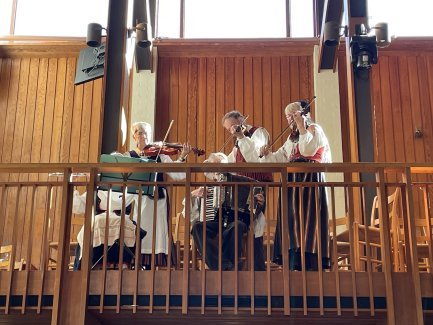Artikkelit

12.06.2024
Petri Koikkalainen: Promoting collaboration with the Finnish-American science diaspora
Diaspora networks, consisting of people living outside their home countries, produce various benefits for their members. In science, which is international and interconnected by its nature, such networks can be especially beneficial. They provide connections to the country of residence and the country of origin, promote people-to-people mobility, and create opportunities in science, education, and business.
Science diaspora networks connect researchers, scientists, and students living outside their home countries and help them establish valuable networks in their countries of residence, as well as in connecting with their counterparts back home.
Several countries from Europe and other continents have invested in official science diaspora networks that operate in the United States. According to the National Science Policy Network (NSPN), such networks of expatriates are a particularly effective means of promoting international collaboration in research, student mobility, and advanced technologies.(*)
What opportunities does the Finnish diaspora living in the U.S. offer? According to the last U.S. Census, about 600,000 U.S. citizens identify as Finnish-American. Another group of interest is Finnish citizens currently staying in the U.S. While their exact number is not available, an educated guess is a few tens of thousands of individuals. A significant number of them have a connection to the U.S. through higher education, research, and advanced technologies. The number of Fulbright Finland alumni alone is more than six thousand in both countries since the inception of the program.
Overall, it seems safe to assume that the relevant Finnish science diaspora around universities, research institutions, and high-tech companies can be counted in thousands rather than hundreds. That is a group with significant potential.
Current Networks
Some of the existing official national science networks are run by national governments (e.g. France-Science), while others rely more on bottom-up initiatives from researchers, universities, and scientific societies (e.g. Españoles Cientificos en USA; German Academic International Network GAIN). Most national networks maintain close connections with their respective diplomatic missions.
Sweden’s STARS Network (Swedish Trans-Atlantic Researchers & Scholars Network) was established in 2019 to connect the Swedish scientific diaspora in North America, to help establish research collaboration, and to promote people-to-people mobility. In 2024, STARS membership included 72 North American universities and 16 Swedish universities.
While Finland does not have an official network in the U.S. such as the above-mentioned, some resources partly fulfill their function. The most significant of them is the alumni network of the Fulbright Finland Foundation, with hundreds of active members and regular events. Moreover, some Finnish universities have organized U.S. alumni networks. Joining forces could produce even larger audiences and greater influence.
The United Kingdom is a country where an official Finnish science diaspora network can be found already. The Finnish Science Society in the UK is a non-profit membership organization established in 2017, on Finland’s 100 years of independence. The society organizes events and provides information to Finns on the opportunities in the UK. It also works together with other European countries to promote scientific connections, collaboration, and mobility between the United Kingdom and the European Union.
Text and Photo: Petri Koikkalainen
Counselor for Science and Higher Education
Embassy of Finland to the United States, Washington DC
Photo: Folk musicians play the song Western Logger (Lännen lokari) as an example of traditional Finnish diaspora. Finnish Bazaar in Bethesda, Maryland, November 2023.
(*) NSPN 2022: Science Diaspora Networks – A Report on Their Goals, Functions, and Future.
